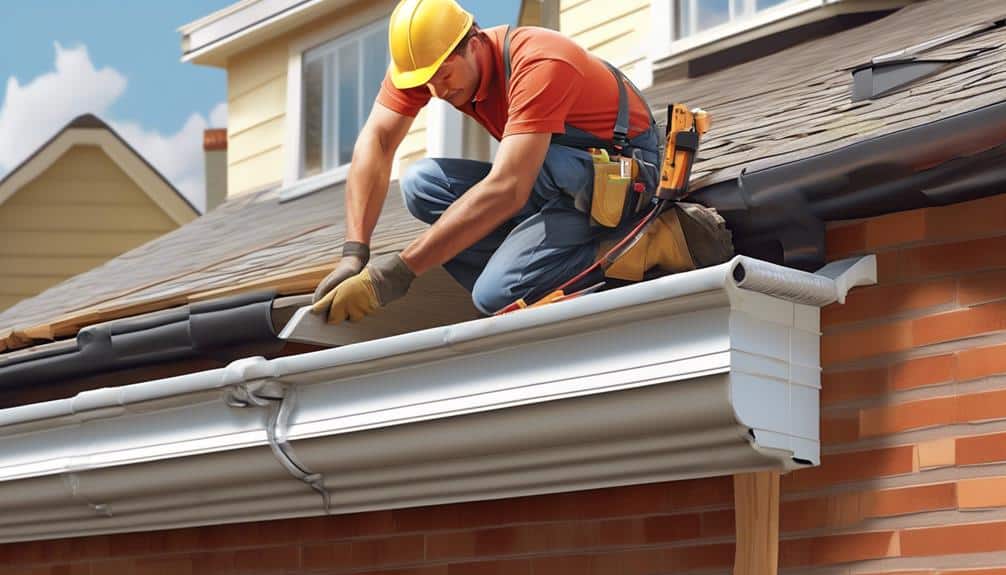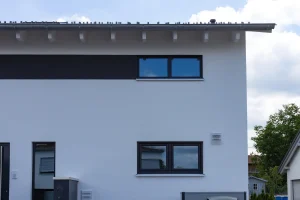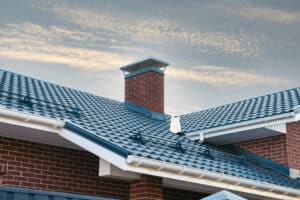Rain gutters are an essential component of any building, protecting it from water damage and ensuring its durability.
Whether you’re a seasoned professional or a novice in the construction industry, having a comprehensive understanding of rain gutters is crucial. This knowledge will enable you to make informed decisions and deliver high-quality work.
In this article, we will delve into the world of rain gutters, discussing their importance, types, installation process, and maintenance. By the end, you’ll be equipped with the expertise needed to choose the right materials, install gutters effectively, and keep them in optimal condition.
Let’s explore the realm of rain gutters for builders and discover how they play a vital role in safeguarding buildings.
Key Takeaways
- Rain gutters protect buildings from water damage and play a crucial role in their durability.
- Builders have various options for gutter materials, including seamless gutters, galvanised steel, copper, aluminium, and vinyl.
- There are different types of rain gutter systems to consider, such as seamless gutters, half-round gutters, galvanised steel gutters, copper gutters, and aluminium gutters.
- Proper installation, regular maintenance, and care are essential for keeping rain gutters in optimal condition and preventing water-related issues. This includes cleaning, inspection, downspout maintenance, and the use of gutter guards.
Rain Gutter Materials
When it comes to rain gutters, there are several materials that builders can pick from, each with its distinct benefits and points to consider.
A favourite among many builders is the seamless gutters. These gutters are created from a single piece of material, removing the need for joints, which could potentially leak. They’re pretty good at safeguarding homes from water damage. Plus, they look neat and tidy, which can improve the overall look of the building.
Galvanised steel is another material often used in rain gutters. These gutters are durable and have a refined look. However, they can be a bit pricey compared to other options, making them a good fit for high-end projects where looks matter.
Copper gutters are another choice available for builders who want to add an elegant touch to their project. Over time, copper gutters gain a beautiful patina, lending a unique and timeless look to buildings. However, the steep price tag of copper gutters might make some builders think twice.
For those who want a budget-friendly yet sturdy solution, aluminium gutters are a common pick. They’re light, easy to install, and can resist rust and decay. They also come in many colours, which enables builders to coordinate the gutter system with the building’s exterior.
On the flip side, vinyl gutters are not used as frequently due to their sectional design and potential to leak. While they might be more wallet-friendly, their lack of durability and tendency to crack over time make them less appealing to builders.
Apart from picking the right gutter material, builders should also think about using gutter guards. These guards serve as a physical barrier, stopping leaves, debris, and other unwanted materials from blocking the gutters. This helps to lengthen the gutters’ lifespan and cuts down the need for regular maintenance.
Types of Rain Gutter Systems
If you’re a builder, you know how important it is to pick the right rain gutter system to prevent water damage in homes and buildings. It’s all about finding the perfect blend of functionality and style.
Here are some options you might want to consider:
- Seamless Gutters: Imagine having gutters that are tailor-made for your building. That’s what seamless gutters offer. They’re crafted on-site with a special machine, meaning they fit your building like a glove and help water flow smoothly. Plus, there’s no need to worry about leaky seams – because there aren’t any!
- Half Round Gutters: Picture a tube sliced in half lengthwise. That’s what half-round gutters look like, and this design is genius because it helps the water flow quickly and reduces the chance of debris build-up.
- Galvanised Steel Gutters: Yes, they might be a bit pricey, but galvanised steel gutters are worth it. With a protective layer of zinc, they’re safe from rust and corrosion. Plus, they add a classy touch to any building.
- Copper Gutters: Want your building to stand out? Try copper gutters. They’re a bit of an investment, sure, but they offer unmatched durability, and let’s not forget the chic and sophisticated aesthetics they bring.
- Aluminium Gutters: If you’re looking for something durable yet affordable, aluminium gutters are your best bet. They’re light, resistant to rust and corrosion, and won’t break the bank.
Installation Tips for Rain Gutters
If you’re thinking about installing rain gutters, it’s crucial to plan ahead and get your measurements right. Let’s walk through the process together.
First off, you’ll want to put together the gutter sections on the ground – trust us, it’s much easier that way. Plus, it ensures the seam of the gutters is positioned correctly to keep water flowing in the right direction.
And did you know there are tools like portable gutter-cutting machines that can customise gutters to fit any building shape? It’s a neat way to ensure a snug fit and a smooth installation.
One thing you want to avoid is rushing into the installation without a solid plan. It’s worth taking the time to map out the process and identify any potential issues ahead of time.
You’ll want to figure out the perfect length for your gutters and the best places for your downspouts to make sure water is being directed safely away from your home.
Don’t be afraid to bring in some help, either. There are professionals out there who can offer valuable services and products to make the gutter installation process a breeze.
Maintenance and Care for Rain Gutters
Maintaining your home’s rain gutters is a must-do task that can’t be overlooked. If you ignore it, you might encounter a bunch of problems, such as blockages or even water damage. So, let’s chat about some handy tips to keep your gutters in tip-top shape:
- ‘Cleanliness is next to godliness,’ they say, and this certainly applies to your gutters. Regular cleaning is needed to get rid of things like leaves, twigs, and dirt. This helps keep the water flowing smoothly.
- It’s a good idea to inspect your gutters every now and then for any damage, leaks, or sections that are sagging. If you spot any issues, get them fixed as soon as possible to keep your gutter system working efficiently.
- Make sure your downspouts are clear and doing their job of sending water away from your home’s foundation. This can help stop water damage from ruining your home’s structure.
- Have you thought about installing gutter guards? They’re a great option to help reduce the chances of debris buildup and lessen the need for constant gutter cleaning. They can help keep your gutters clean and working as they should be.
- If you live somewhere with cold winters, it’s wise to check your gutters for ice dams. If your home is well-insulated and ventilated, you can help stop ice dams from forming. These can cause damage to both your gutters and roof.
Frequently Asked Questions
What Do I Need to Know Before Installing Rain Gutters?
First off, you’ll need to decide what kind of material is going to work best for you. There are a few different options, like galvanised steel, copper, aluminium, or vinyl – each with its own pros and cons. It’s also key to remember that once those gutters are up, they’re going to need some TLC to keep them doing their job and lasting as long as possible.
What Should I Know About Gutters?
When you’re considering different types of materials for your rain gutters, you’ve got a few options like galvanised steel, copper, aluminium, and vinyl. Each has its own unique advantages. But why get gutters in the first place? Well, they actually serve a super important purpose. They help prevent issues like erosion, basement flooding, and leaks. They can even help stop problems with your home’s foundation. So, by ensuring your home has a good gutter system, you’re taking a big step towards keeping it safe and well-maintained.
What Should Be the Fall When Installing Rainwater Guttering?
When setting up your rainwater guttering, you want to ensure it’s done right. So, what’s the best tilt to aim for? A slope of half an inch for every ten feet should do the trick. This angle is just right for keeping the water moving smoothly down the gutter, stopping it from pooling up and causing blockages. Plus, it’s a great way to safeguard your house’s foundation from any water-related harm.
How Do You Plan Rain Gutters?
When you’re getting ready to install rain gutters, you’ll want to make sure you get the length of the gutters just right and map out where the downspouts will be placed to direct water away from your home. Good planning can ensure that the gutters fit well with the style and size of your house, and can help you spot any potential issues before they become problems.






